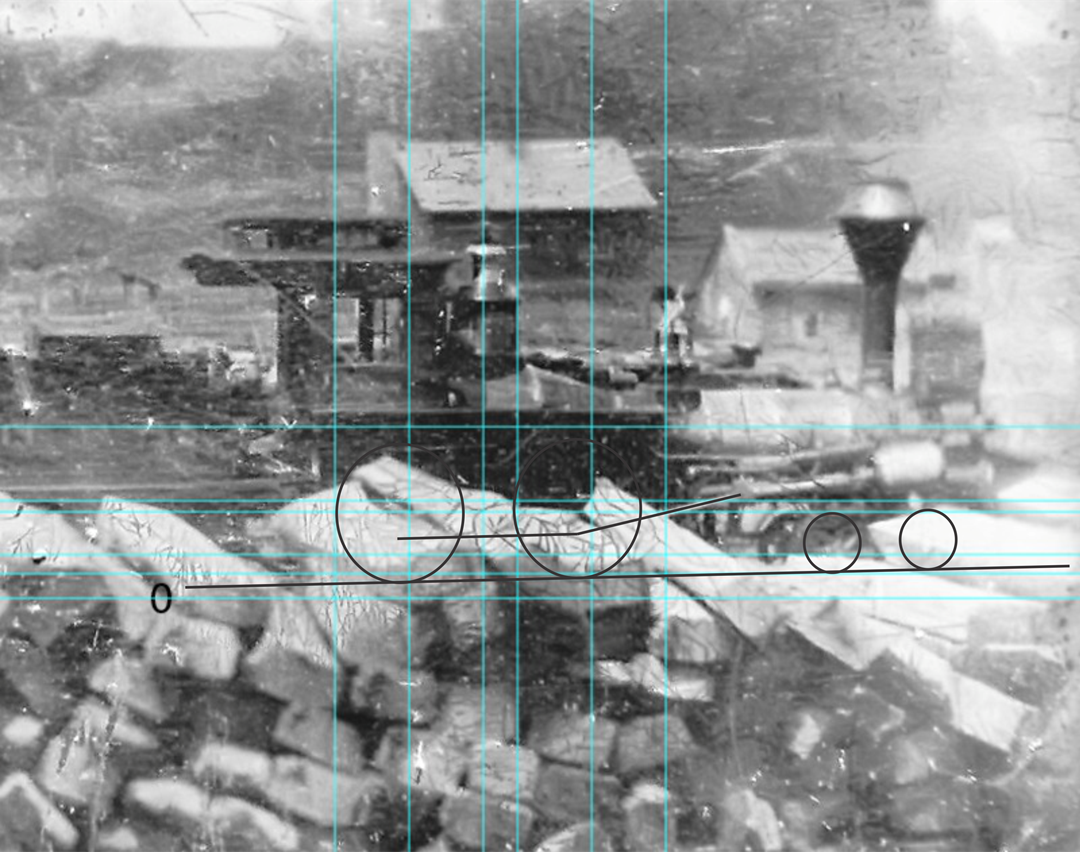Randy-
No way that machine is Rupert’s #275….. this engine was built prior to 1860 based on the diameter of the boiler and the dual steam domes.
The front truck and inclined cylinders also preclude it from being later.
The 307 attached is more like an 1870s loco.
Follow the angle of the Main Rod down to a reasonable point where it can meet the offset from the center of the driver (eccentric). The side connecting rod is below the top of the woodpile and if the engine were a 4-2-0 the driver could not be connected to the main rod and not have the engine flip over backward because of balance.
A roster I have for early locomotives states that the Pioneer and Pidgeon were the only 4-2-0s and they had identical specifications… This list shows them as having inclined cylinders, which we know, and a candidate shows up as having MUCH inclined cylinders….the Corning which was previously raised. It also has the smallest cylinders of any on the list beyond the Pioneer and Pidgeon…14 1/2x222 went others were 16 or larger.
The Erastus Corning became No.8 and was built in 1852 by Schenectady.
Charlie Vlk
